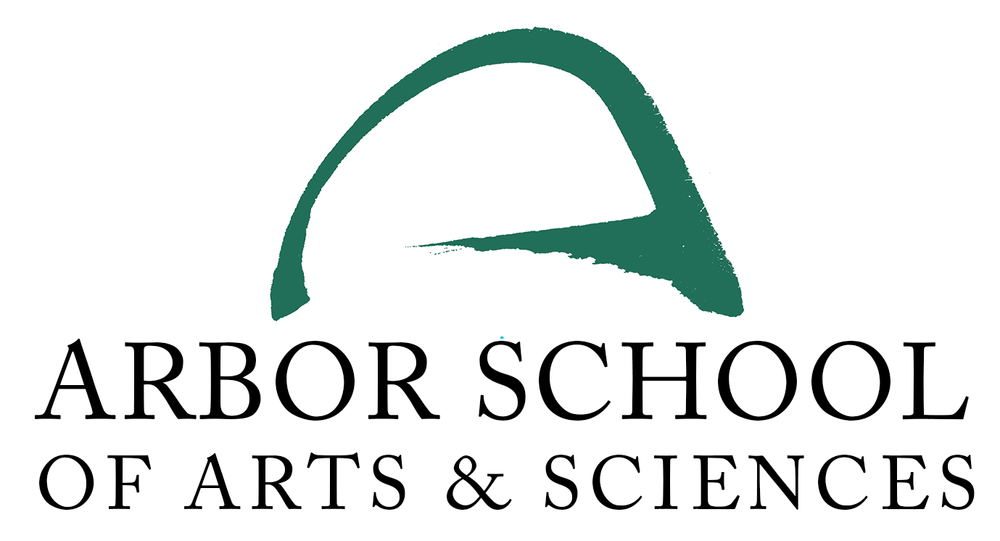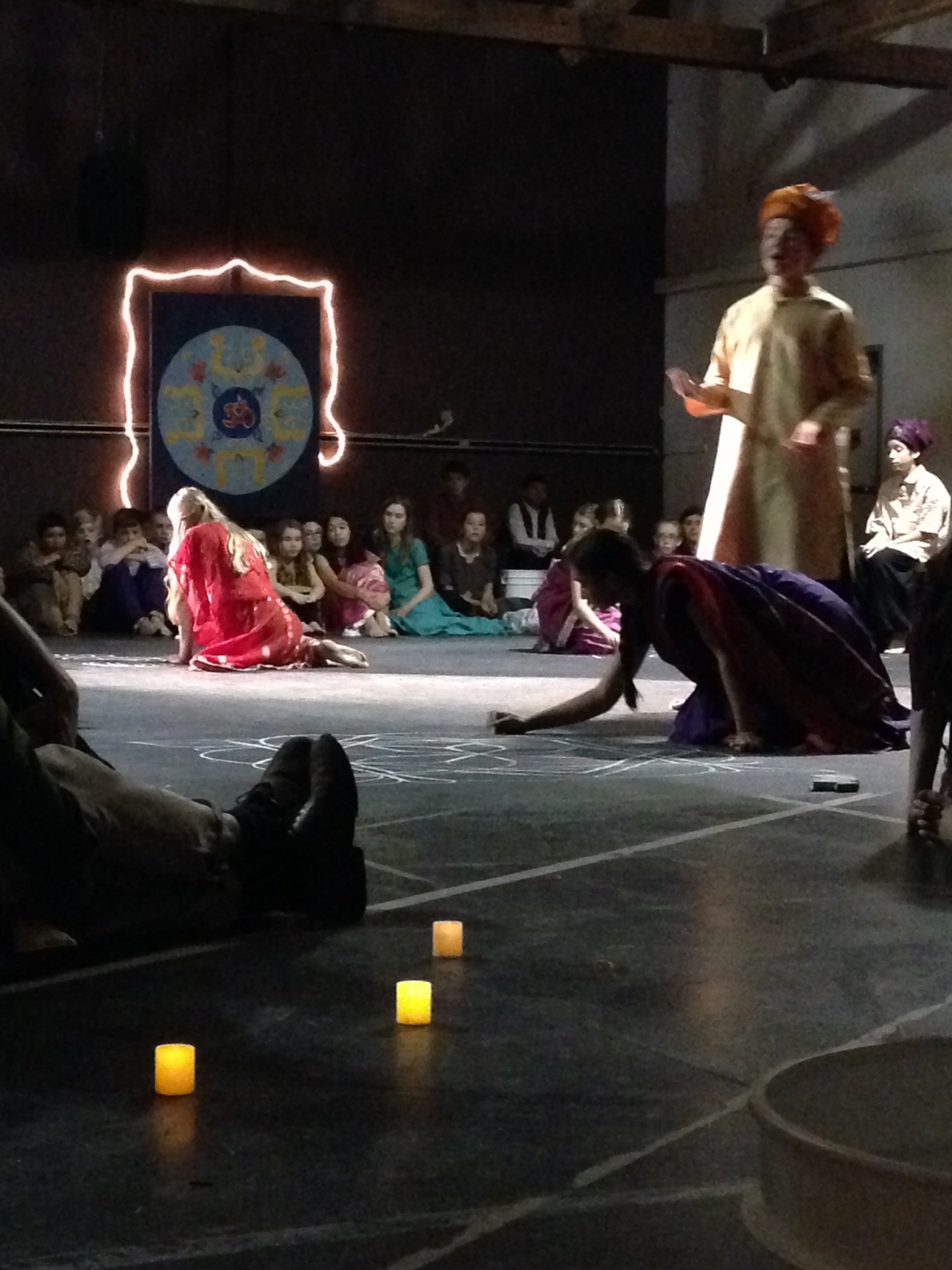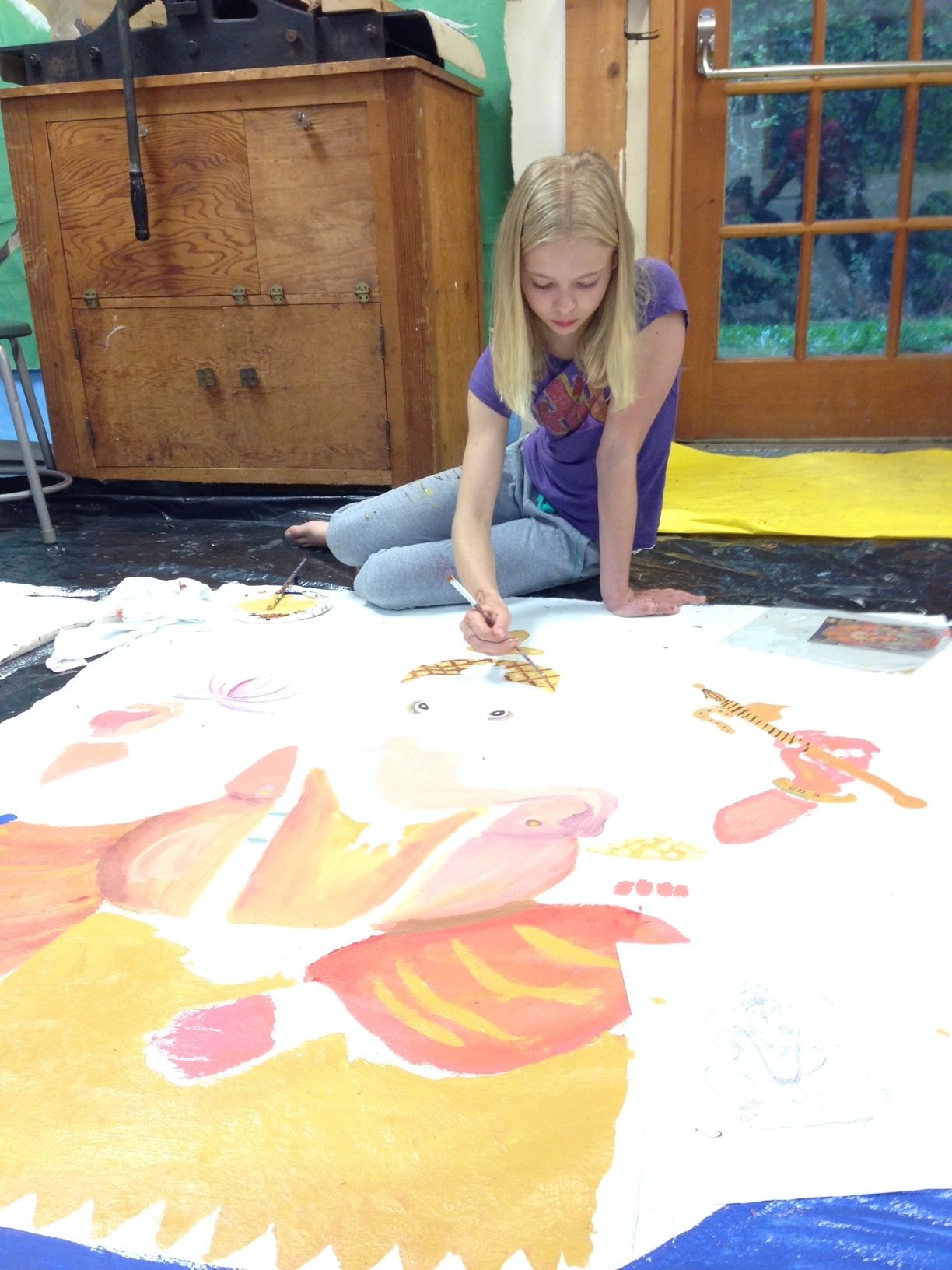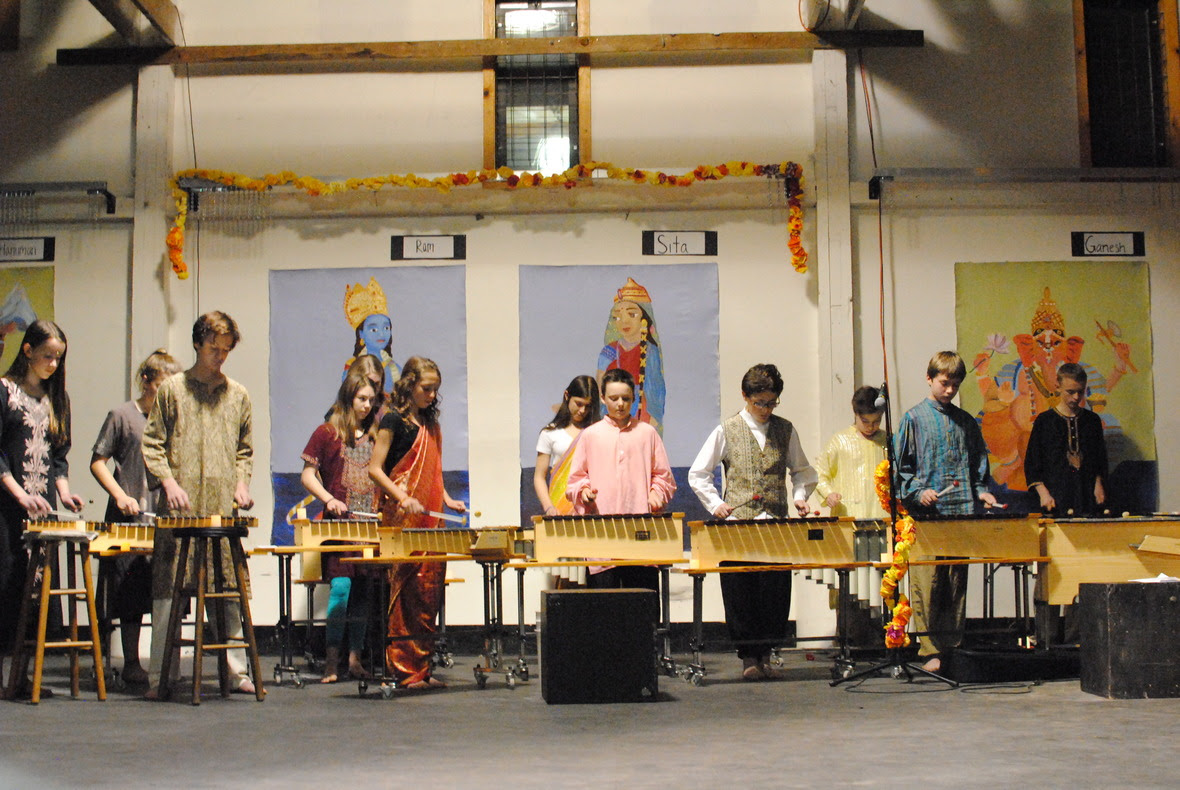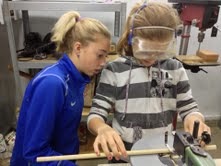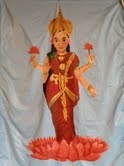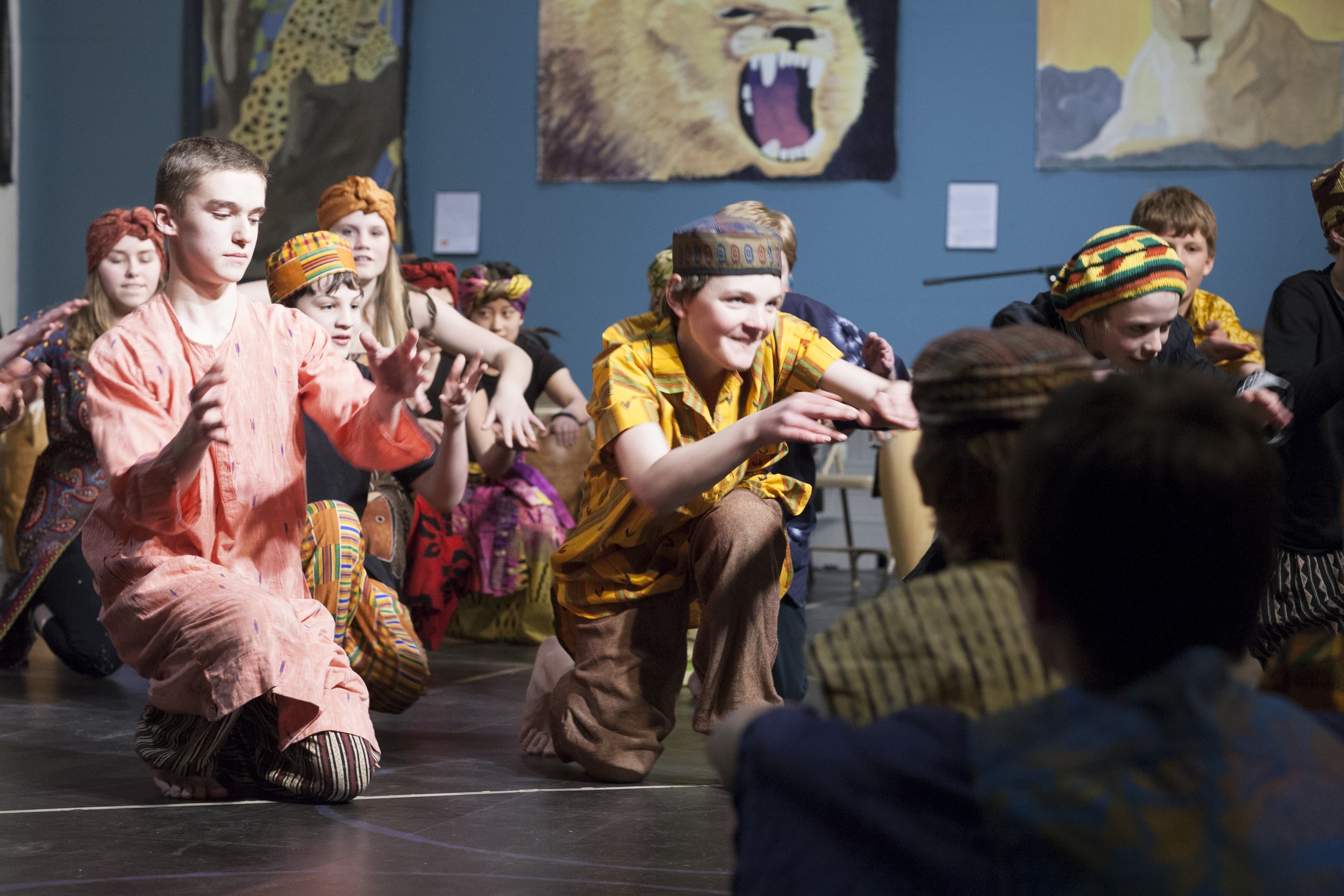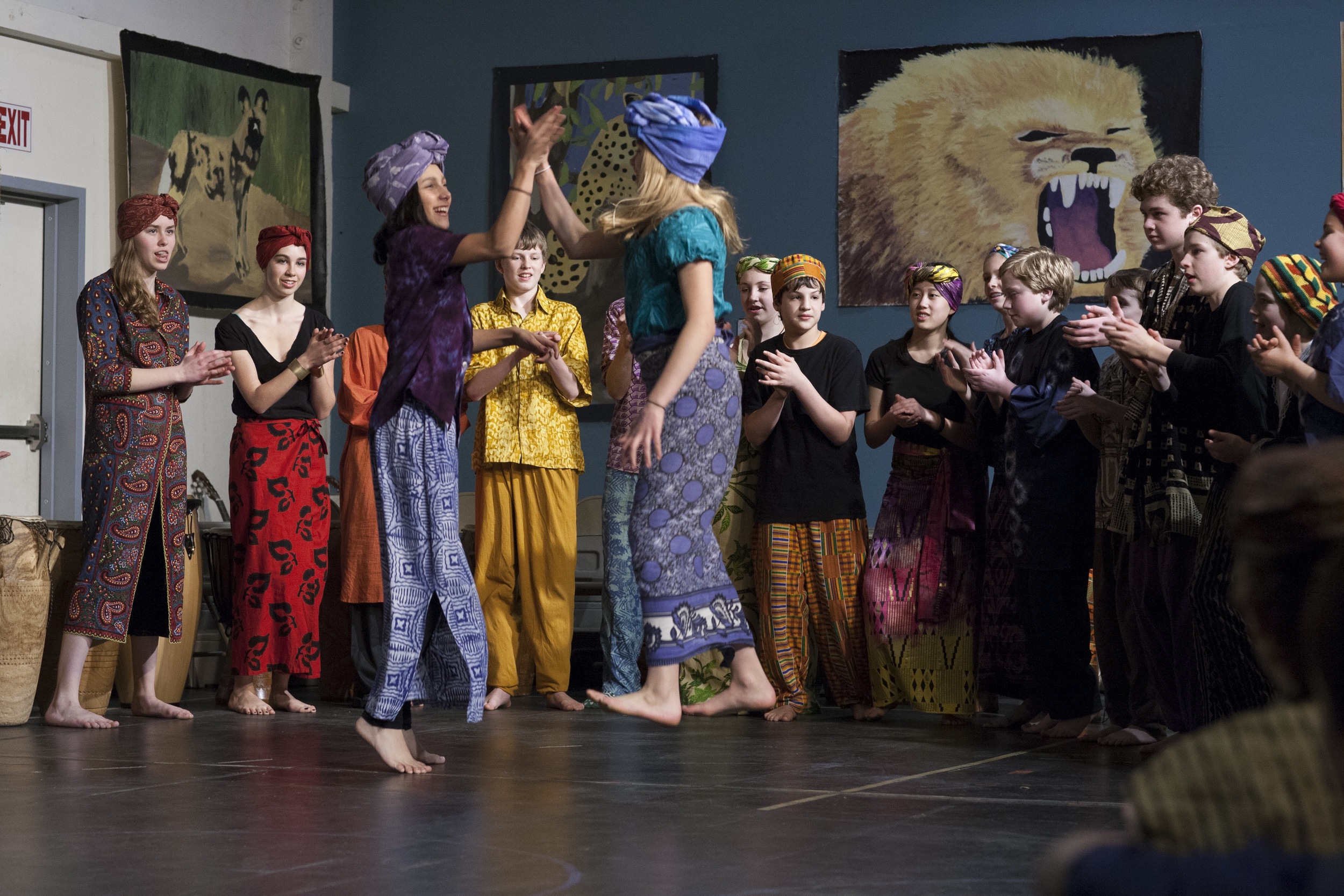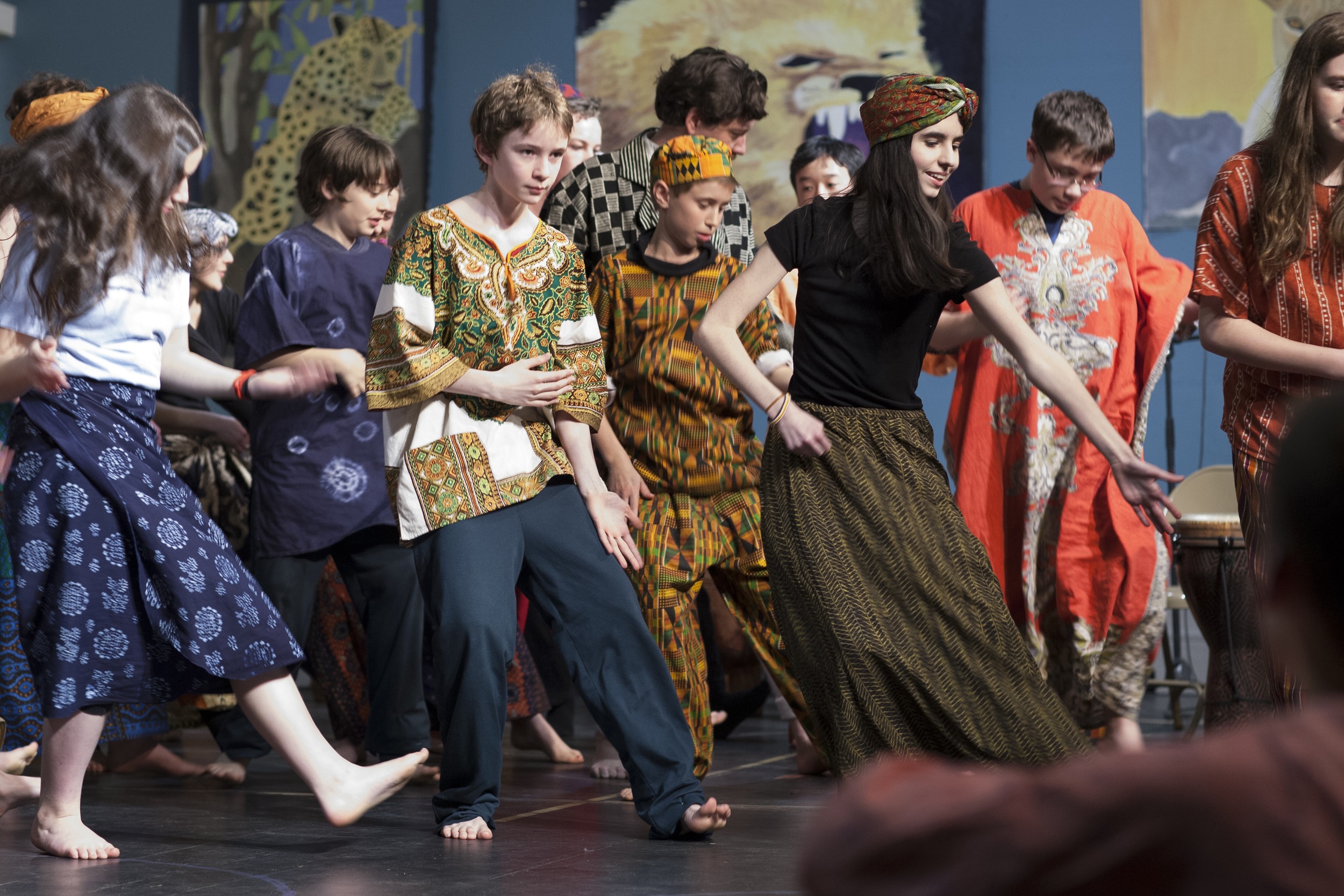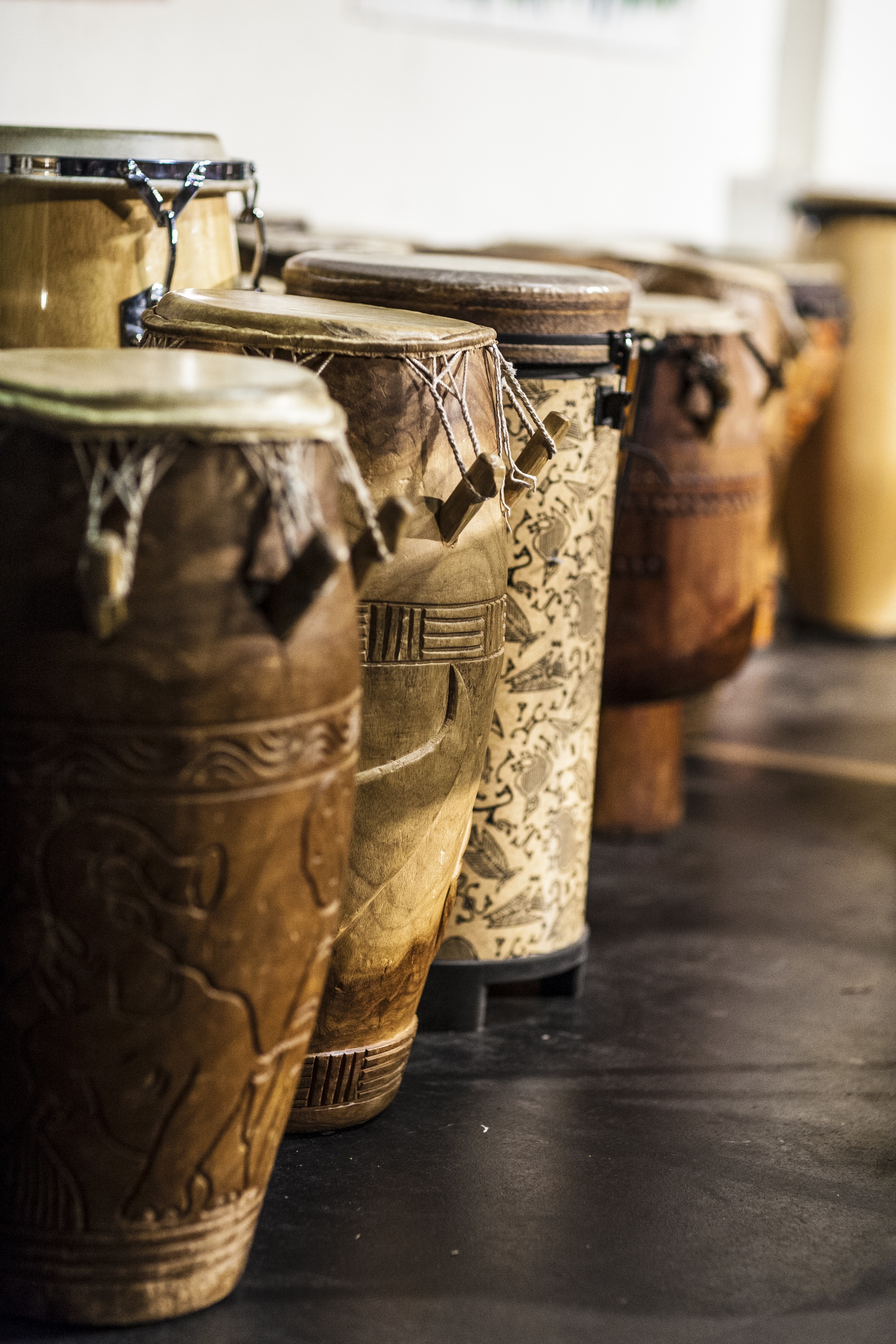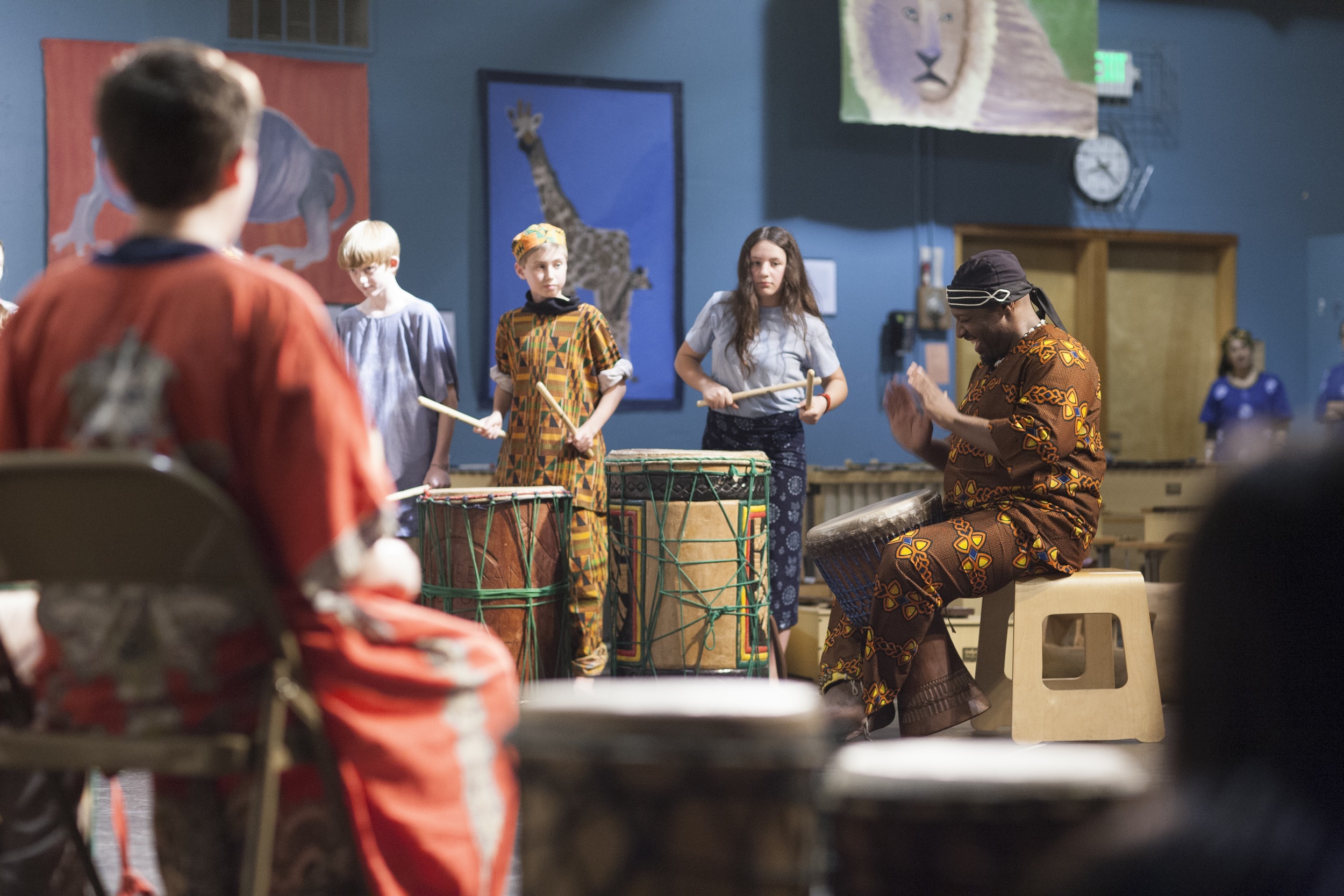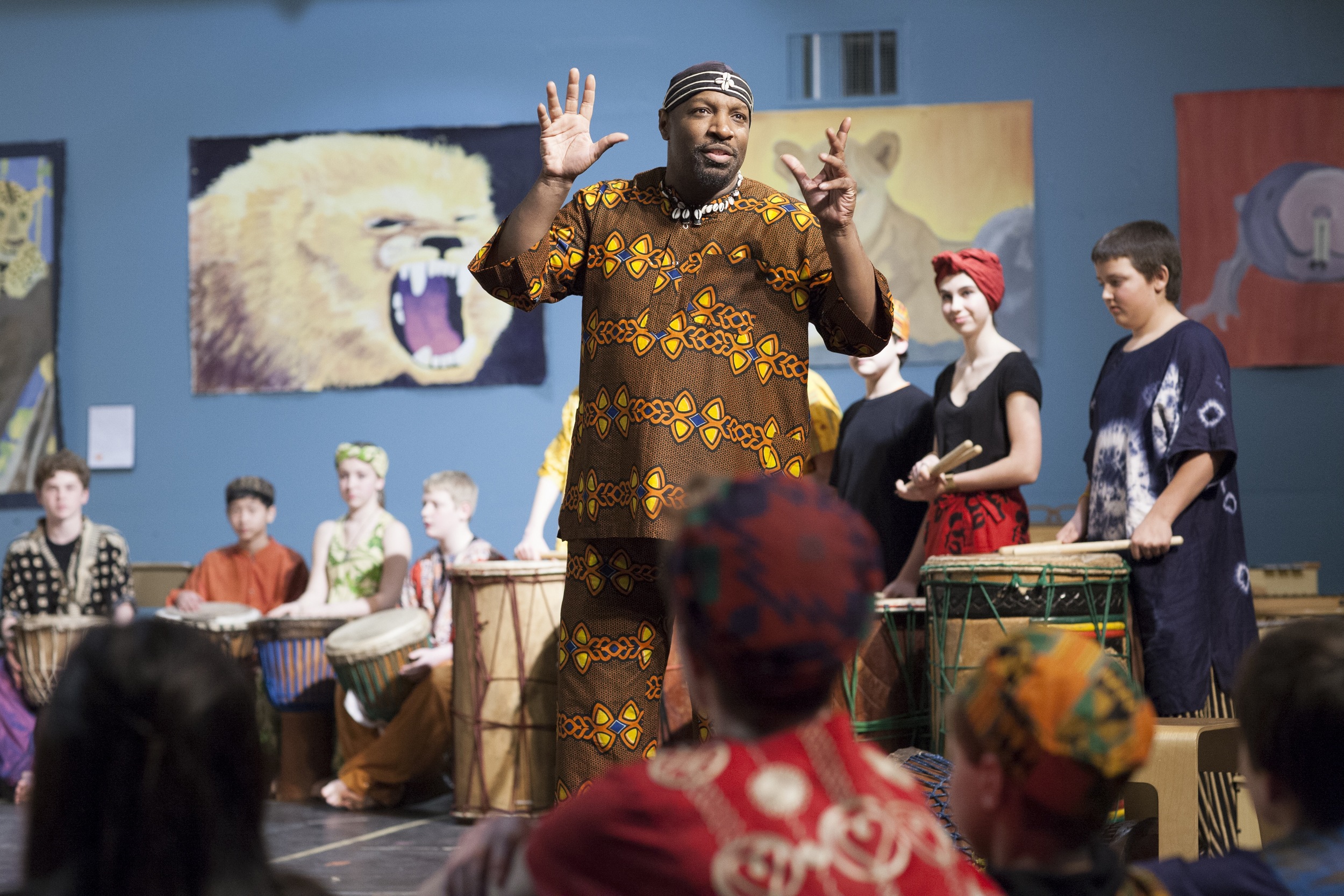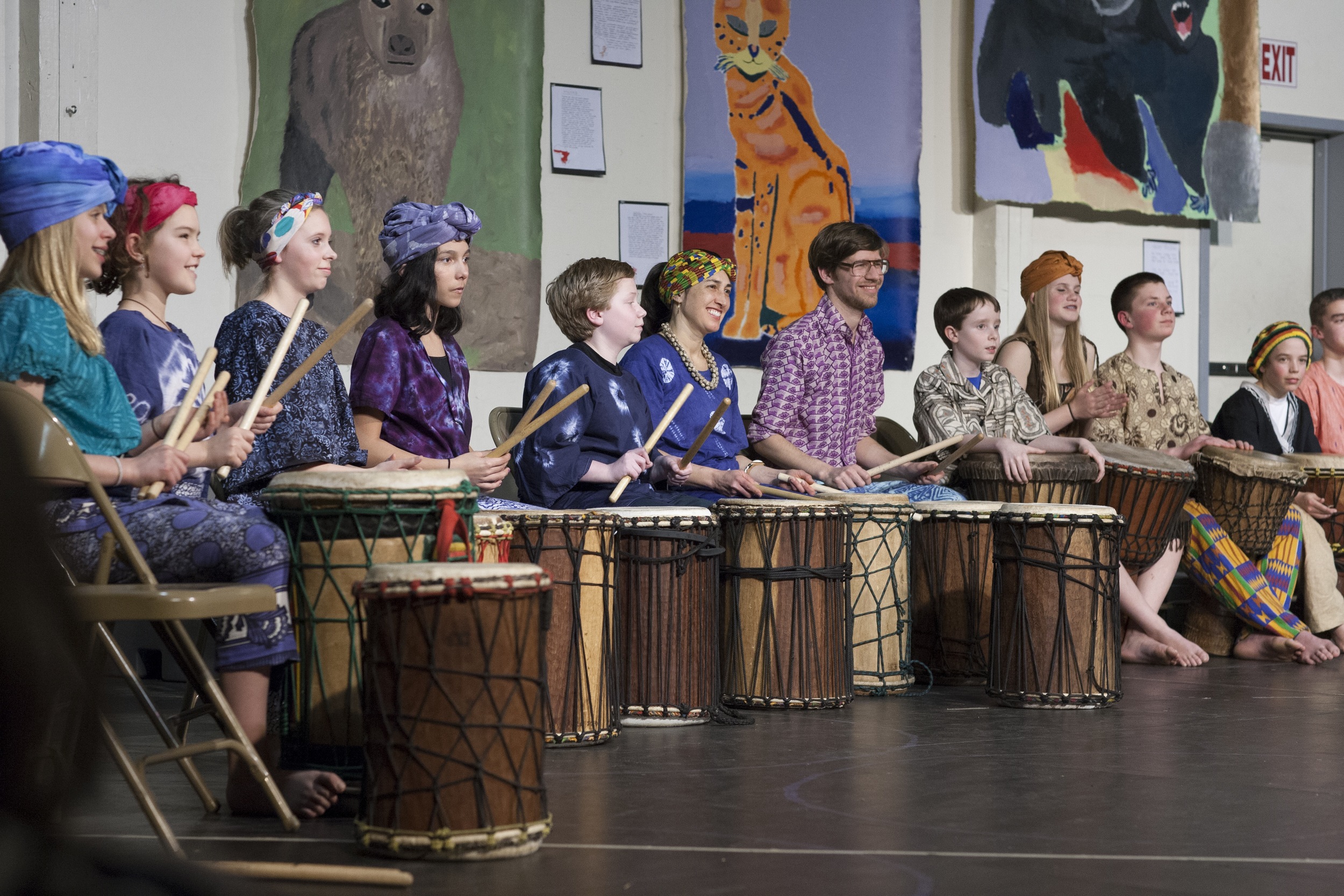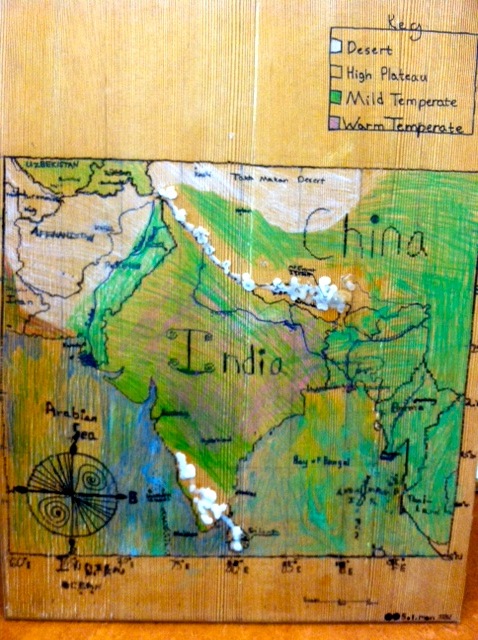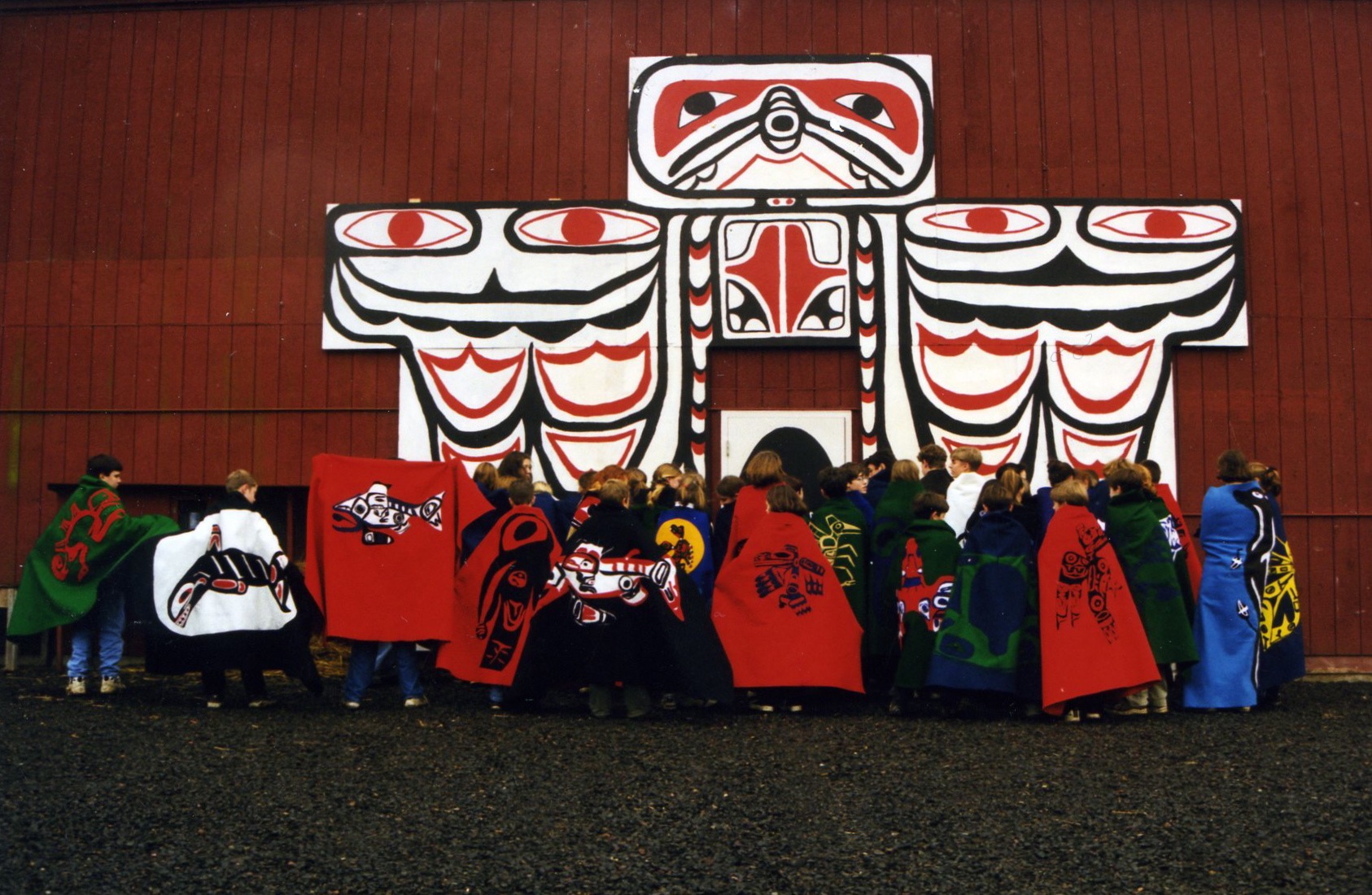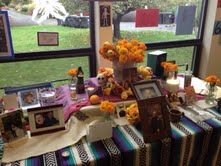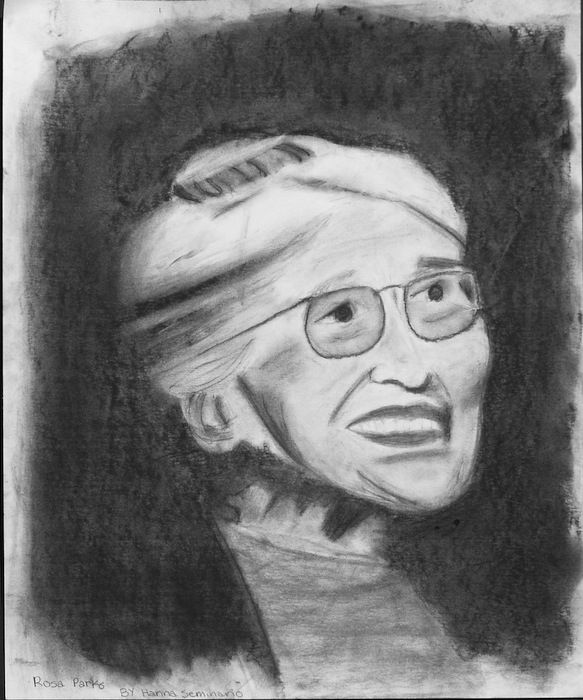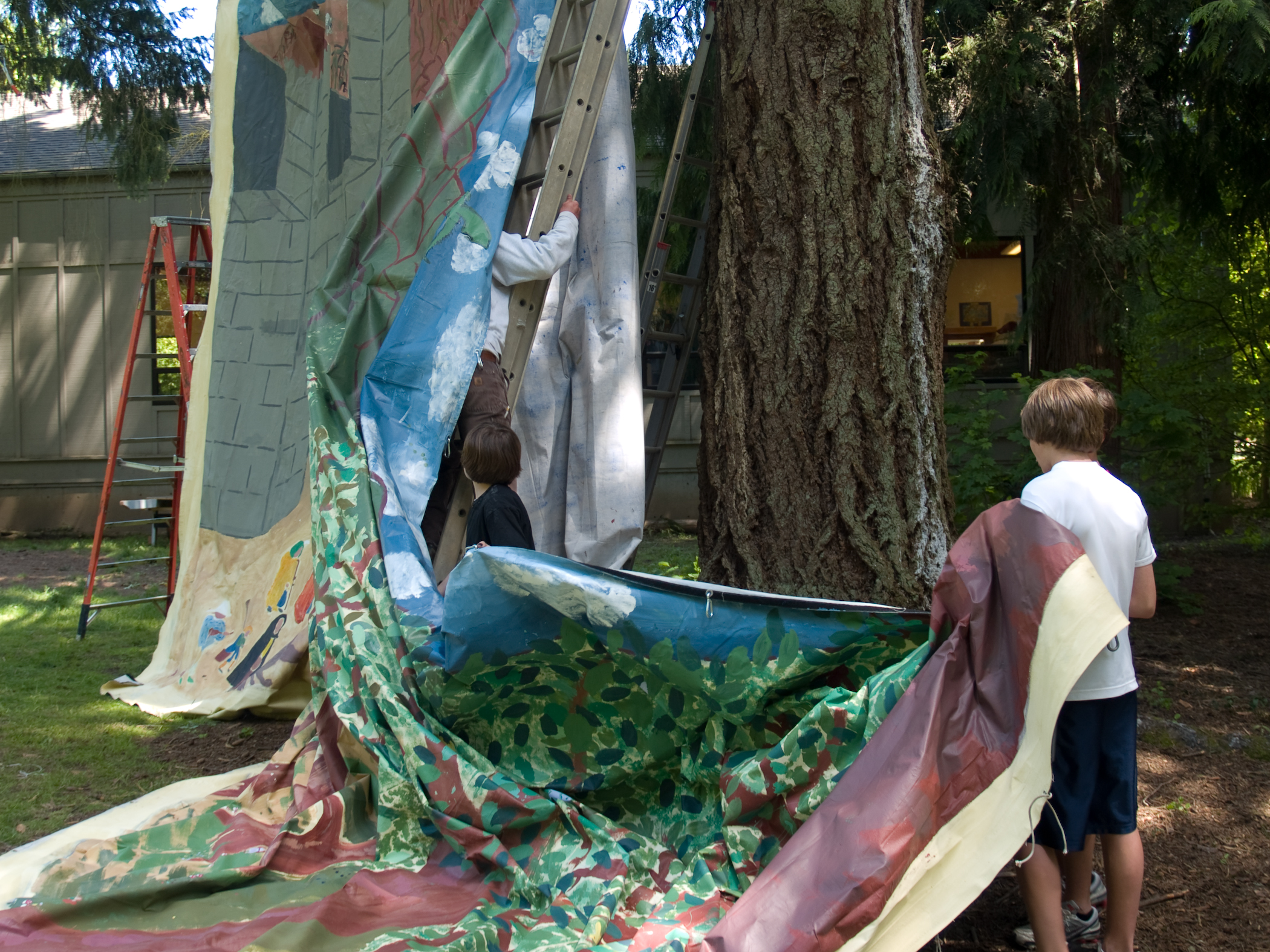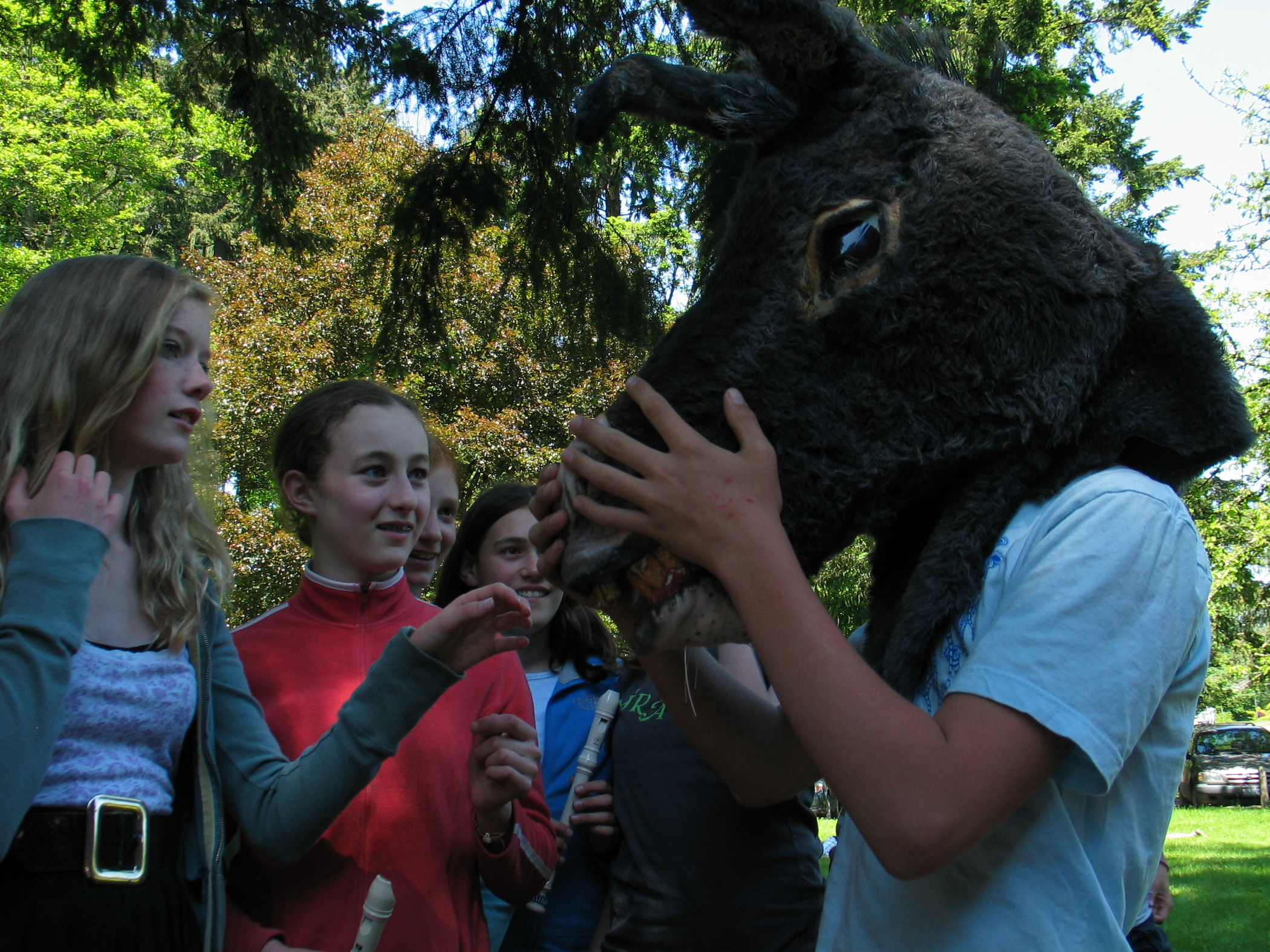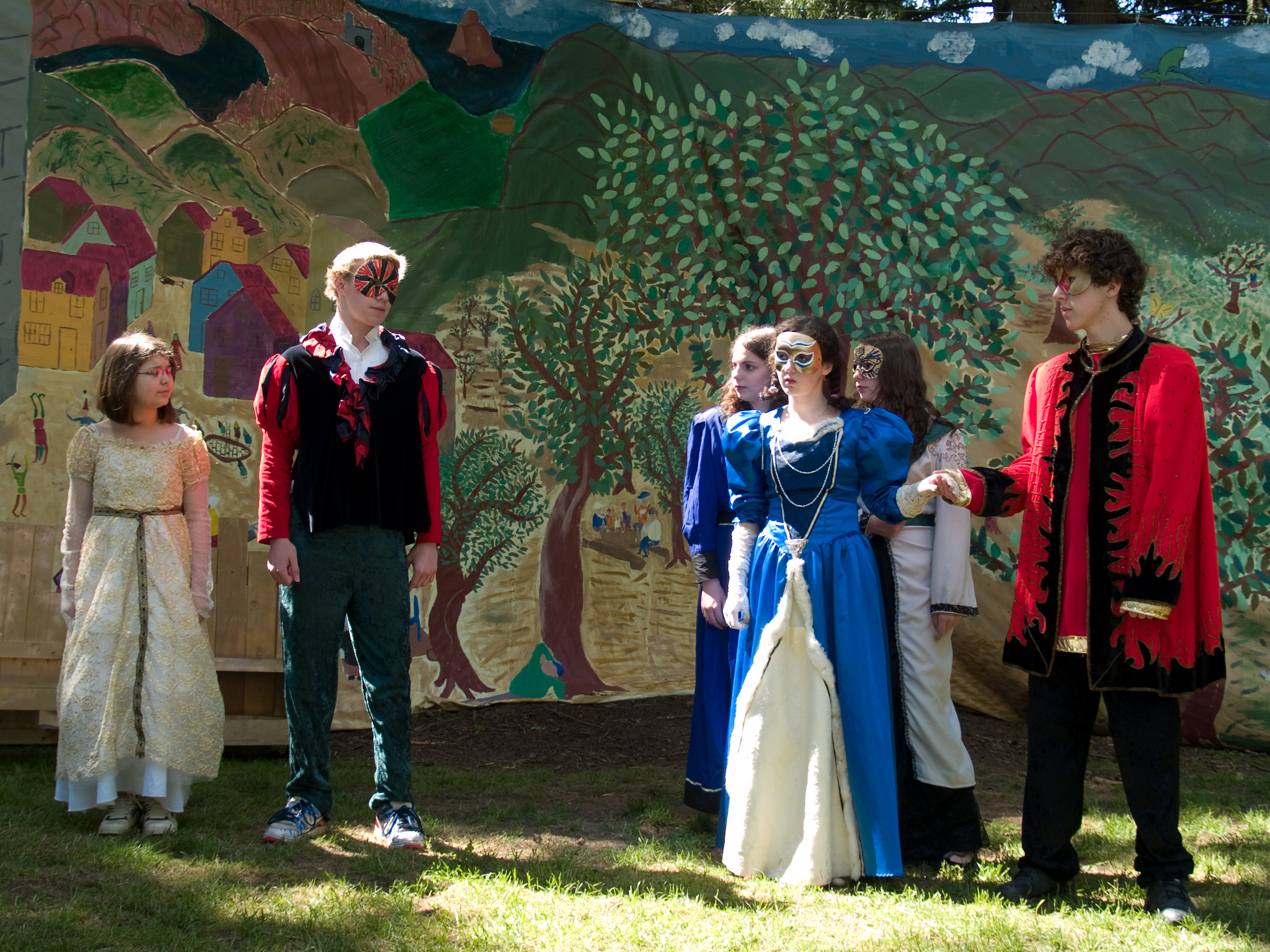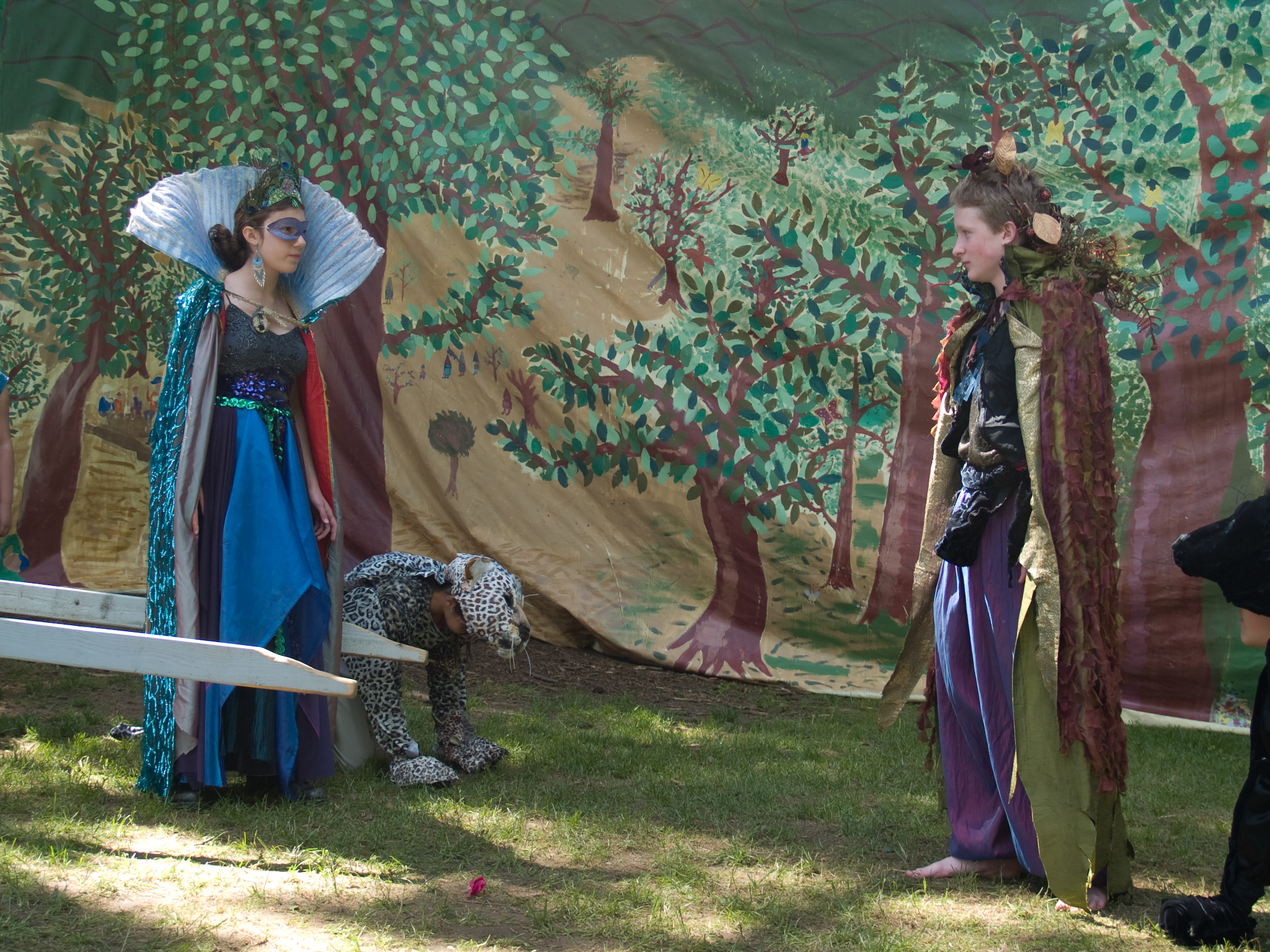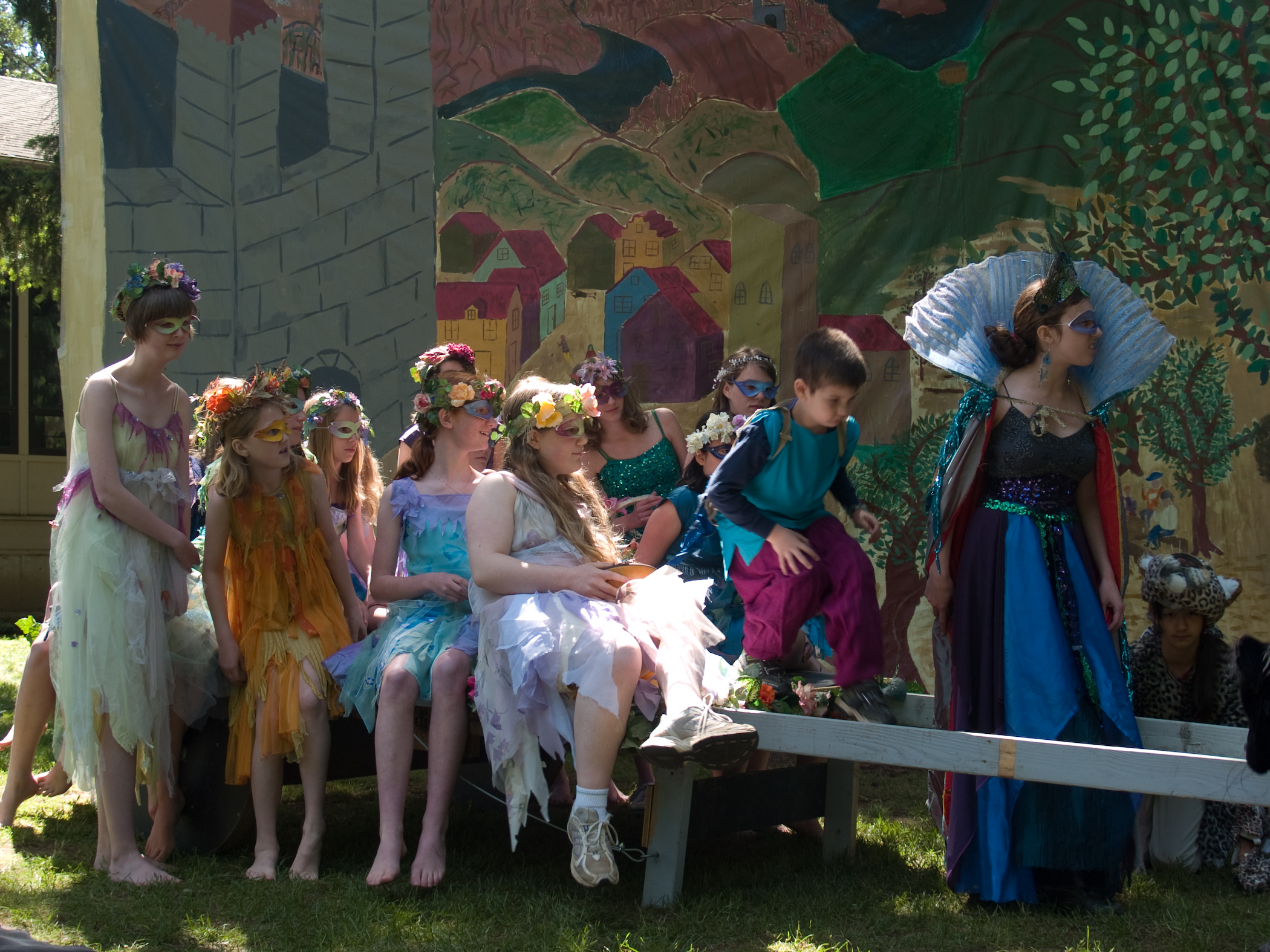SENIORS – Sixth, Seventh, and Eighth Grade
Humanities
Our three-year program in Humanities seeks to help students discover the myriad ways in which all people are similar and to celebrate the ways in which we are different. We do this by examining each major area of the world through six lenses: geographic, historic, religious, cultural, social, and economic.
Our primary avenues are a wide selection of fiction and nonfiction readings—by native authors, if possible; guest lectures and slide shows by natives or knowledgeable outsiders; video and film presentations, magazines, and newspapers. Students study foods from each culture and prepare them for each other, and enjoy relevant music, dance, and the arts. Each year we mount a significant dramatic ensemble production that draws on our studies and serves as a vehicle for collaborative and creative growth.
Year 1: South Asia, Sub-Saharan Africa & China
We focus on Hinduism and the struggle for Indian independence. Consulting with experts, we work to create our own version of a major Hindu holiday (sometimes Navaratri, sometimes Diwali) that brings together art, song, and movement. Our West and South Africa unit looks at the history of the Mali Empire, the legacy of colonialism in West Africa, and the fight against apartheid in South Africa. We bring in outside instructors to help us mount a performance of West African song, dance, and stories. In our study of China, we consider the long tradition of Confucianism and the remarkable technological and philosophical innovations that have emerged in China over the millenia.
Science: Pattern & Diversity
The Seniors explore pattern and diversity in nature as well as in human civilization; the Science and Humanities curricula are closely linked. As we study plate tectonics, we might also study early Chinese seismographs and build devices of our own that can record data about a quake. The origins and evolution of our ancestors are topics to explore both through scientific and anthropological lenses. Throughout we ask questions such as "What causes change?" "Why do things sometimes stay the same?" "Can creatures, cultures, and landscapes be said to be making progress?"
The rock cycle
Plate tectonics
Paleontology and the fossil record
Evolution
Genetics
Year 2: The Americas
Our focus in this curricular year is civics writ large in the Western hemisphere. In the fall term, we ask when revolution is justified and we examine the causes and courses of the American, Hatian, and Bolivarian Revolutions In the winter term, we look at institution-building, with a particular focus on the United States Constitution and at the practice and legacy of slavery in the Western hemisphere and the way in which it rain so deeply against the promises of the Constitution. We close the year by considering the maintenance of institutions through civic engagement and activism, with a particular focus on the importance of genuinely listening to people whose views differ from your own. Performances have ranged from "Our Town" to "The Wizard of Oz" to a student-authored adaptation of Paul Fleischman's “Seedfolks” and an original musical addressing climate change, “Our Time Now.”
Science: Energy & Motion
While immersed in themes of energy and motion in American society, we study these ideas literally in a physics-heavy Science year. We test our understanding of gravity, inertia, and friction by racing cars down an inclined plane. We construct electrical circuits. Throughout, we ask questions such as, "How has energy been a catalyst for change?"
Newtonian Mechanics
Electricity
Waves (light, sound, water)
Renewable energy
Year 3: Eurasia
Our year begins in the Middle East, where we look at some of the world’s earliest cities and ask what brought them into being and what makes them work; at the same time we turn that lens on our own metropolitan area, learning about Portland’s history and its governmental and civic institutions. We study the rise, beliefs, and practices of the three Abrahmic faiths: Judaism, Christianity, and Islam. In each case, we bring in practitioners to discuss their faiths with us. In the winter and spring terms, we focus on the rise of nationalism as a key force in human life, looking especially at the two World Wars and the Holocaust. We mount a production of Shakespeare’s A Midsummer Night’s Dream, working with an outside director.
Science: Systems & Structures
Along with the systems and structures of human civilization we consider those in the natural world. Using our campus woods as a laboratory, Seniors learn to trap and identify tiny creatures that creep, scuttle, and fly and to study the systems invertebrates have evolved for survival. Students build models of invertebrate anatomy and atomic structures and compete in a toothpick bridge design challenge. Throughout, we ask questions such as, "Why do humans divide, classify, and sort?"
Invertebrate biology
States of matter
Atomic structures & molecular bonds
Chemical interactions
Human body systems
Engineering & strength of materials
Mathematics
Arbor's Senior Math program is designed to help students recognize the power and the beauty of mathematics. As they gain skills, students also think about the essential questions that underlie their mathematical practice and apply their emerging expertise in new and open-ended problems. This type of thinking requires a high degree of independent exploration. Teachers and textbooks will always be critical resources, but the habits that students build and connections they create for themselves are the most enduring.
To this end, we place an early emphasis on algebraic thinking. Algebra gives students a language to universalize the principles that they uncover, helping them to understand new material more deeply and to draw sophisticated connections. Algebra also helps students develop the critical thinking skills that they will need to solve complex problems and generate their own ideas—both in and beyond the realm of mathematics.
Students are asked to think, write, and speak explicitly about the core concepts that they encounter. We want them to engage with mathematical ideas in their own words and at their own pace. We balance a high degree of independence with the collective energy of group discussion and teamwork, as Arbor students tend to bring out the best in one another.
Arbor Seniors work from an algebra curriculum written by two of our Senior teachers, Greg Neps and Linus Rollman. The trilogy is a writing-based, common sense, whimsical, and engaging introduction to algebra written directly to the middle-grade student. The content takes Arbor students through the equivalent of a high school Algebra I course; many students finish all three volumes by the end of eighth grade, preparing them to enter Algebra II, Geometry, or sometimes higher math classes.
Jousting Armadillos & Other Equations:
An Introduction to Algebra
Inductive and deductive reasoning; the language of algebra; negative numbers; algebraic functions; single-variable equations
Crocodiles & Coconuts:
Equations in Two Variables
The Cartesian coordinate plane; graphing two-variable equations; functions and formulas; solving simultaneous equations; graphing circles, ellipses, parabolas, and hyperbolas
Some students complete the algebra trajectory before the end of their eighth-grade year and proceed to study geometry. This small cohort studies logic and proofs; coordinate geometry and transformations; theorems and postulates for triangles; trigonometry; and properties and theorems for other polygons, circles, and solids.
Literacy
Our ultimate goal is to help each student become a thoroughly independent reader, one who reads across genres, discovers a sense of personal literary taste, reads to make meaning, and connects reading across domains. We seek to teach our students to write with clarity and organization, to pose and answer questions, to develop theses and gather supporting evidence. Seniors read independently at school for approximately three hours each week and participate in Seminar groups of 10-12 students and a teacher, reading aloud and discussing a book that is common to all groups. The book is chosen for its literary merit, connection to the culture under study in Humanities, and for the universality of its themes. Teachers strive to impart important lessons on how to think about text, and we look to guide all members of the Seminar to become seekers of essential human truths. All three grades have a weekly Writing class in which we build skills and explore different varieties of writing; students are expected to produce a weekly piece of writing at home, on which they receive feedback.
Spanish
The three-year Senior Spanish program introduces students to both the grammatical structure of the language and to the cultures and concerns of the Spanish-speaking world. The approach is threefold. First, it seeks to bridge the linguistic and cultural divide between “English speakers” and “Spanish speakers” as Spanish, the second most widely spoken language in the world, and the first in the Americas, becomes a de facto second language in the U.S. Second, it helps students build awareness of progress achieved via persistence, gain facility in attention to detail and pattern recognition, and experiment with techniques for learning according to individual needs. Third, it combines both communicative and grammatical methods. To quote an Arbor student, “It’s not how much you know, it’s how you use what you know.” Thus, when students practice conversation in the classroom, they rely on their circumlocution skills rather than running to a dictionary when they find themselves stuck. This fosters creative linguistic problem solving and self-reliance. “Grammar” is studied as a puzzle to be investigated and understood rather than as a set of rules to be memorized. The language is appreciated as a living entity that is daily spoken by hundreds of millions of people with their own histories and experiences.
